index memoir - homepage - contact me at
I first met Cubby When she was 17years old at a party in Newlands given by her friend Marcella. My friend Peter Albert had ‘press-ganged’ suitable swains and we danced and bopped to Elvis Presley’s Blue Suede Shoes and Jail House Rock.
Cubby was in her first year studying Commercial Art at Cape Town University’s Michaelis Art School close to the restful Botanical Gardens[1] in the City. My sister Judy and Breytan Breytenbach of later ‘Albino Terrorist’ fame were also studying Fine Art at this time.
Cubby, despite my nickname Slimy, telephoned me afterwards and asked me to partner her to the annual fancy dress Art School Dance. I was flattered and we started going out together regularly. I was 19 years old at this time in the third year of my Civil Engineering studies at the main university campus above Rondebosch.
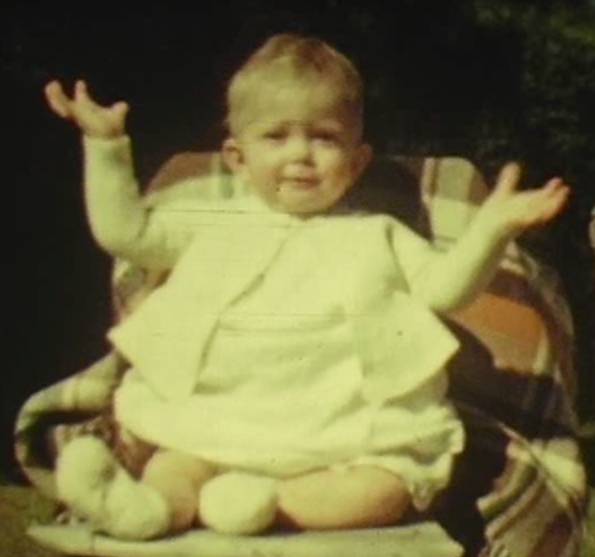 |
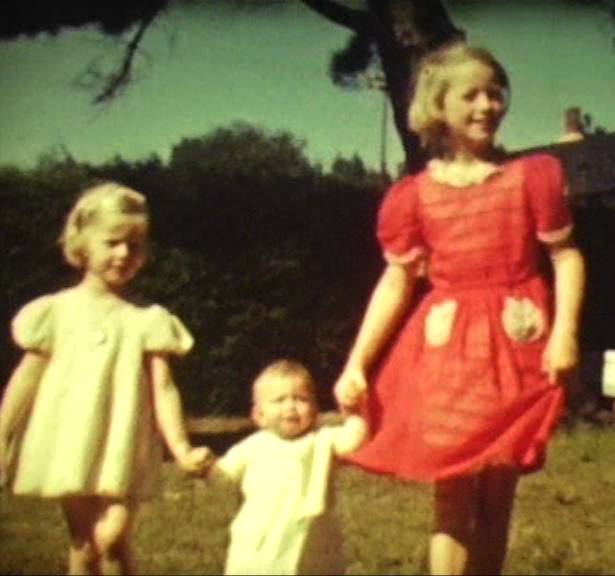 |
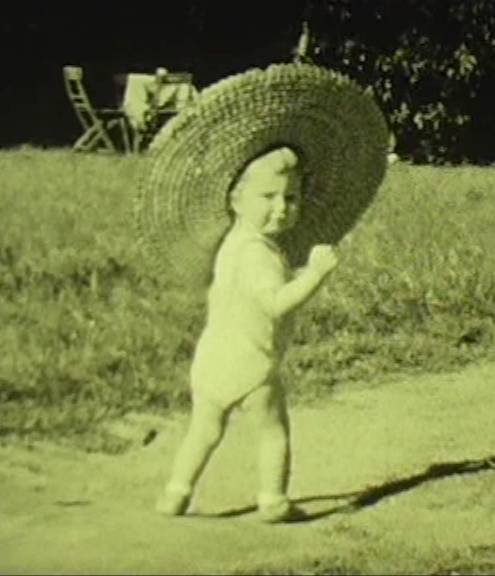 |
|
Pictures of Cubby with her sisters taken at their home in Rondebosch - freeze framed from home movie - see footnote 3 |
||
|
|
|
|
Cubby with her godmother Gerda Sorensen; Cubby as toddler; Elder sisters, Bodil on left and Tippe in centre and Cubby on right. |
||
Cubby lived in Campground Road, Rondebosch with her parents and two sisters, Bodil a few years older, and Dorte, a ‘laat lammetjie’[2] about 6 years younger than Cubby. A further older half sister Tippe from her mother’s first marriage was living in Johannesburg and I only met her years later. Cubby’s Danish father, a civil engineer, had sailed out to South Africa with his wife Mercia and Tippe and Bodil a year before the start of the Second World War to build a cement plant at Philippi on the Cape Flats. Before bringing his family out by sea, he had flown on a reconnaissance trip down Africa on an Imperial Airways Flying boat landing on water each night so that passengers and crew could rest. Cubby, actual name Cathrine, had been born in Rondebosch[3] on the 1st September 1939, the day Germany marched into Poland starting the 2nd World War.
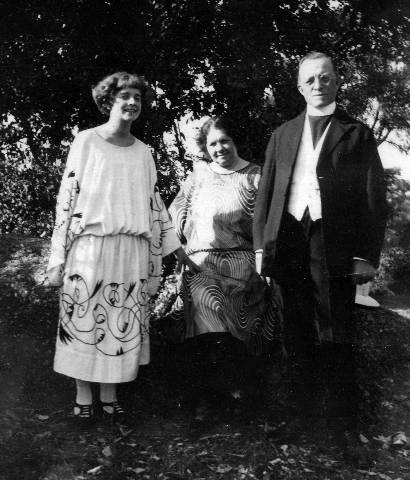 |
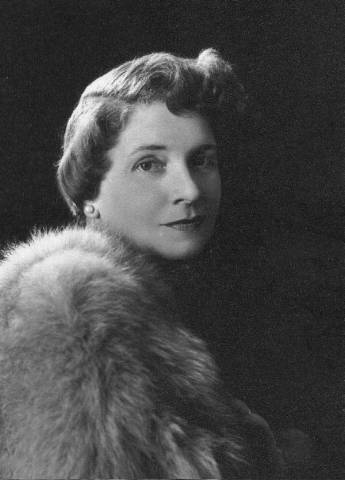 |
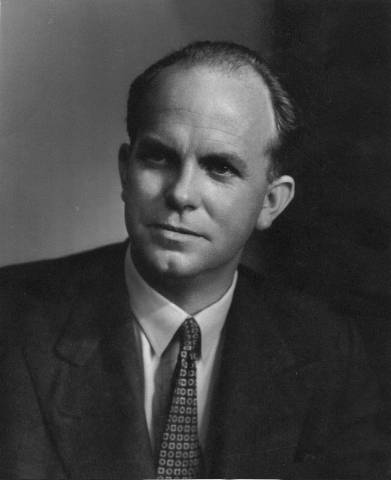 |
1st picture - 15 year old Mercia with her Swedish parents, Hulda and Gustav Bjork, missionaries in India. 2nd & 3rd pictures - Cubby's parents Mercia and Aage in their early South African days. |
||
As English, rather than Afrikaans, was the main business language in the cities of South Africa, Aage and Mercia spoke English at home, initially to improve Aage’s fluency. Mercia, born in India, of Swedish missionary teachers, had spent much of her youth there and was more fluent in English than in her native Swedish or adopted Danish. Cubby’s home language was thus English with only a smattering of Danish from parent’s conversations not intended for children’s ears. The Second World War cut them off from returning to or visiting Denmark for seven years, and effectively they settled in South Africa and took out citizenship.
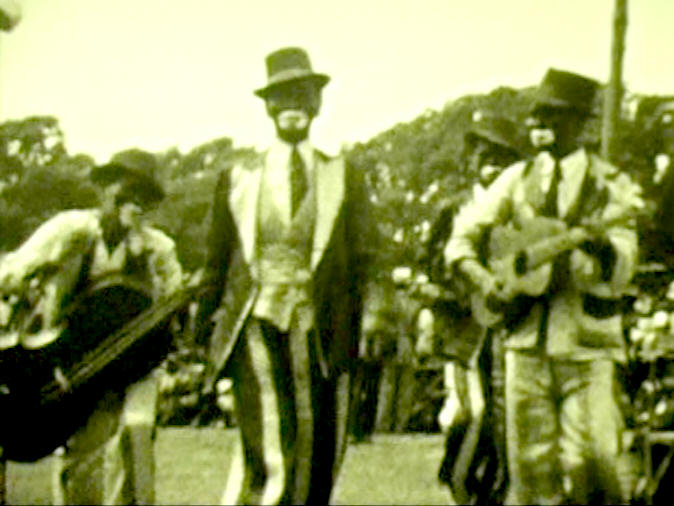 |
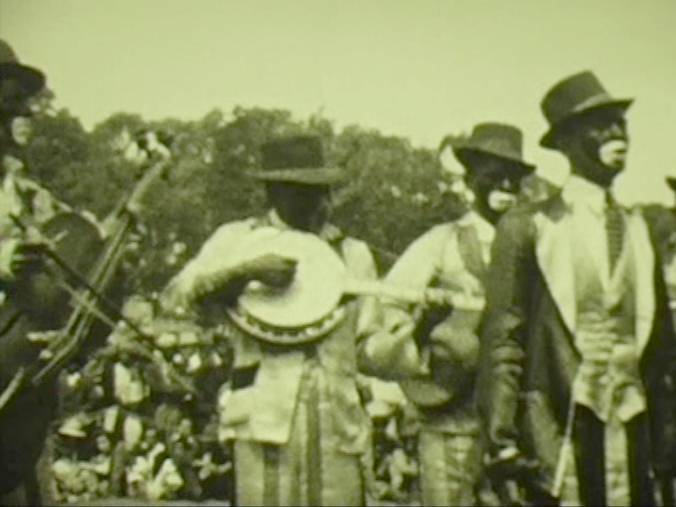 |
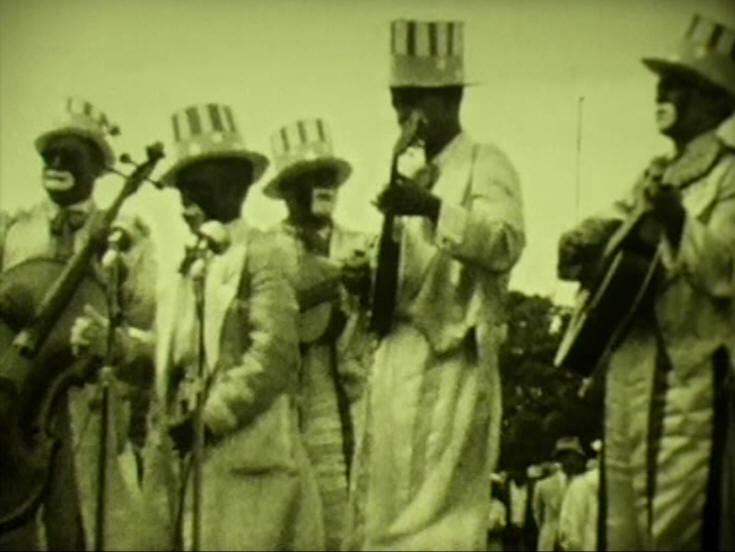 |
|
Freeze framed pictures of the Cape Town Carnival in the early 1940's - unfortunately the bright colours of the garments cannot be seen. |
||
Aage’s work in construction took the family to Durban and Johannesburg and also to Sasolburg in the Orange Free State where he had worked as construction manager on the first South African coal to oil conversion plant[4]. When I met him he was the General Manager in South Africa for the Danish company Christiani and Nielsen who specialised in design and construction of harbour and marine works, but also did many other civil engineering works.
Due to the itinerant nature of construction, Cubby briefly attended, until she was 7 years old, two schools – Mare Stella Convent in Durban followed by Herschel Girls School in Claremont, Cape Town. Finally she went to Roedean[5] in Johannesburg near the ‘Wilds’ gardens. At Roedean she obtained the nickname Cubby, used ever since. She went there initially with her sister Bodil but was also joined later by sister Dorte. Initially Cubby was a ‘day girl’, but became a boarder at 14years in 1953 when her parents moved to Sasolburg. This private school exerted a strong influence on behaviour. Although she was christened as a Lutheran, the traditional Danish religion, she was confirmed at 14years of age as an Anglican at school in 1953.
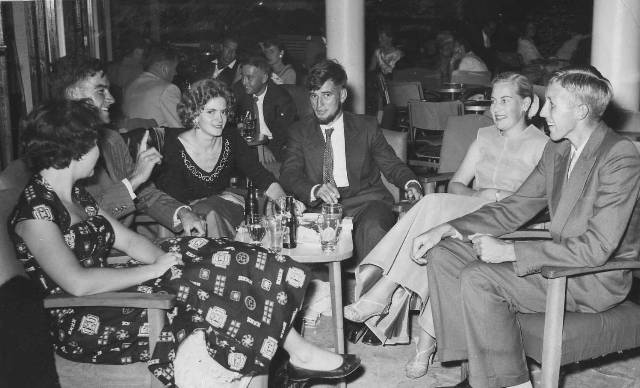 |
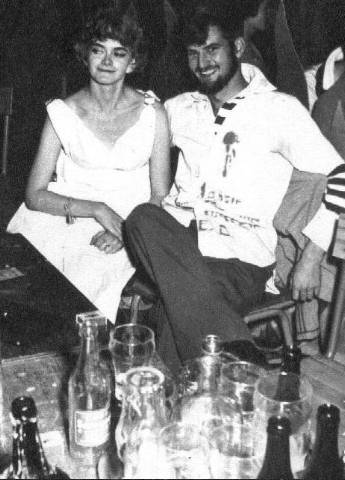 |
.jpg) |
1st picture - Cubby and I (centre) with engineering student friends Robin MacKellar and Conrad Guelke. 2nd Picture - in fancy dress at Art School Ball in 1957? 3rd Picture - Cubby, in glasses and hat, in sea of U C T Supporters at rugby intervarsity with Stellenbosch University |
||
Mercia had a pale blue Morris Minor car in which I gave Cubby a few driving lessons. She practised hill starts on the pine-wooded road behind the university leading up to Rhodes Memorial before she passed her driving test. Together with my father’s bulky Nash we had mobility in the evenings, a necessity for a university social life as there was no public transport up to the Campus. In the day one walked up to the university, but at night this was not feasible.
In mid 1958 Cubby went with her parents and younger sister by boat to Europe on holiday to visit relatives. She flew back earlier to avoid missing classes and stayed on her own in their apartment for a few weeks. I visited her frequently, but due to the observant gaze of my parents dutifully returned home nightly.
Despite the distraction of Cubby as a girl friend, my studies continued with me somehow managing to scrape through examinations or being permitted to write supplementary ones. I continued mountain and rock climbing with day trips up Table Mountain or in country districts over weekends, often with the University Mountain and Ski Club. I was usually led up more severe rock climbs by more able and experienced friends such as Bill Turner or Andrew Gruft. At this time the prime climbing club was the Mountain Club of South Africa – a then somewhat conservative body restricting membership to ‘whites’ only – some of my companions were members but because of its racial policy I was not tempted to join.
Climbing was not a sport Cubby followed. Her knees had been operated on when younger to remedy a tendency to dislocate. Cubby preferred swimming. We sometimes went to the beach, lying in the sun on the Clifton sands and plunging into the icy cold water when hot. We experimented smoking Peter Stuyversant filter cigarettes influenced by their seductive advertisements but fortunately never became addicted.
We danced together whenever we could, at parties, in hotels, at art school balls - this was delicious physical contact unlike the later separate gyrations in our children’s youth. Like everyone else during this time we would drink alcoholic drinks and then drive afterwards fortunately without having accidents.
|
|
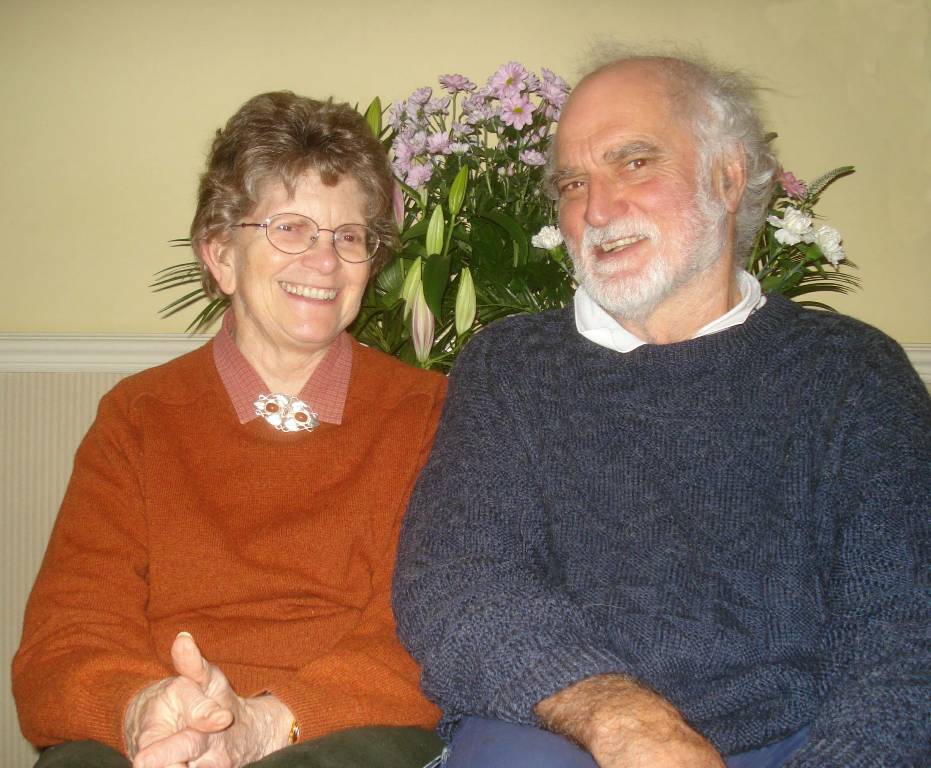 |
Our wedding day 8th December 1958 - picture taken under pine trees in Rondebosch near Cubby's parents apartments on Camp Ground Road |
Fifty years later - 8th December 2008 |
.jpg) |
.jpg) |
|
Sixty years later on - 8th December 2018. Picture within picture on right by our granddaughter Martha |
|
|
|
|
|
Cubby eightieth birthday 1st September 2019 - in our garden |
|
Towards the end of my 4th and final year, Cubby found herself pregnant. We, me 21 years and Cubby 19 years old, married some months later in the City hall’s registry office overlooking the grand parade on 8th December 1958 in the presence of our respective parents. Aage gave the families a celebratory dinner at the Vineyard Hotel in Newlands after which we went to a hotel in Camps Bay where we spent a single honeymoon night.
The next day I started a vacation job working in Cape Town for some months detailing reinforced concrete buildings before writing a supplementary exam in surveying – the only final year subject I had failed. Only after re writing and passing could I be awarded my BSc Civil Engineering degree. Optimistically we planned to go to England before knowing the result. This would avoid embarrassing our parents with a grandchild arriving before the required nine months period. We in any case, like many South Africans, wanted to travel abroad to see more of the world.
During the period before departure I stayed at Cubby’s home. Aage, a kind and considerate person, was easy to get along with but Mercia was a more difficult person, rather bourgeois[6] with values and opinions I did not always appreciate and often tactlessly disputed. When Cubby took a farewell tour of South Africa with her parents, I continued working in Cape Town and moved back for some weeks to my parent’s Pinelands home. I found it strange living without Cubby for this short period while they travelled through the east coast Garden Route to Durban and Johannesburg and said farewell to school and other friends.
[1] This was on the site of Jan van Riebeeck’s first vegetable garden for replenishing the Dutch East Indian Companies ships voyaging to the Orient.
[2] Late lamb – usually unplanned offspring
[3] Some early black and white (and colour) 8mm amateur film records her as a toddler in a large house shared by her parents and a Dutch couple. They had left the Dutch East Indies and were in Cape Town, when Holland was occupied by the Germans, and thus delayed their return to Europe.
[4] South Africa had plentiful coal reserves but no oil at that time and was heavily dependent on imports. If effective trade embargoes arose against SA Apartheid policies, oil from coal it was hoped would alleviate the situation.
[5] A sister school - to the one in Brighton, England.
[6] She had absorbed the values of privileged children isolated from the riff raff in the British Indian Raj where she had attended a British Type Public School, Woodstock School in Mussoorie, rather than the religious values of her Swedish missionary parents.
Cubby's account of her father Aage's journey down Africa by flying Boat
In September 1937, my father Aage Brink a 25 year old Danish civil engineer was sent by his employer F L Schmidt to the other end of the world, to South Africa on what was to be a short trip concerning the construction of a cement manufacturing plant near Cape Town. Unusually, rather than going by sea on a more leisurely steamship liner, he travelled on Imperial Airways flying boats down Africa. His ticket would cost his company more than his annual salary.
In 1936, Imperial Airways ordered 28 Empire ‘C’ class flying boats straight from the drawing board for their Empire Air Mail Scheme. In the 1930’s routes were established to India, Australia, the United States of America and South Africa to reduce the time taken from Britain to the furthest of these outposts to a matter of days instead of weeks. These flying boats replaced earlier aeroplanes.
The flying boats were 88ft long from nose to tail. A double decker bus could drive under their wings which could cover 15 buses parked abreast. These leviathans could carry a full load of 7.4 tons of freight, mail and about 24 passengers, pioneering a whole new era of commercial flying.
Passengers generally caught an early train from London’s Waterloo Station, but my father with a few other passengers stayed the night before at South Western Hotel in Southampton leaving at a more reasonable hour for the harbour where, bobbing on her ponderous belly, lay ‘Clio’ the first of several flying boats in which he was to travel the 7288 miles to Durban. With a cruising speed of 165mph and a range of only 760 miles frequent stops would be made for refuelling. A steward, among the total crew of five, attended to them, but with only a small galley, meals were usually taken during stops.
The first port of call was Marseilles where passengers disembarked for lunch before continuing and landing on Lake Bracciano in Italy. The passengers were taken to Rome to a first class hotel on the Plaza del Popola. Sufficient daylight hours remained for my father to visit the Coliseum, St Peter’s, Forum Romano and even Mussolini’s Palace.
On the second day of their journey they lunched at Brindisi en route to Athens but oil pressure problems forced them to spend a night at Athens. In the morning my father, with knowledge gleaned from earlier family holidays, became the passengers’ unofficial guide. His companions were scandalised to hear that the Turks who had occupied Greece in 1458 had used the Parthenon as a powder magazine. In 1687 besieging Venetians had also blown up the Parthenon and the Turks had continued the devastation by burning the ruined marble for lime.
 |
|
Picture of a flying boat (photo supplied by Adrian Meredith photography) |
On the afternoon of their third day they continued their journey in a replacement flying boat the ‘Centaurus’ to Alexandria. Somewhere over the Mediterranean Sea, one of their four moderately supercharged ‘Pegasus’ engines spluttered and died. Fortunately the plane could fly on two engines even if they were both on the same wing. They learnt that the flying boats were recalled every 5000miles for the fitting of new engines.
Normally they only flew in daylight hours, but night had fallen before they arrived. While Centaurus circled above the harbour, small boats set alight the two rows of flares on buoys which guided the pilot, cautious captain Travers, to a safe landing. Alexandria was my father’s first encounter with real poverty. Homeless and sick seemed to throng the streets and beggars were numerous.
Time was costly even in those more leisurely days and the airline was anxious to make up for the time lost at Athens. An early morning take off in their new craft Cassiopeia took them to Cairo but left no time for sightseeing. Similarly Luxor with the ancient ruins of Thebes, the normal stopping place for the third night was bypassed. A disappointment for my father, he had come to regard this journey as a nineteenth century grand tour.
From Cairo, for the next 2500 miles they followed the Nile River southwards, touching down several times on its smooth wide expanse. Below he saw endless sand slashed by a ribbon of water bordered by strips of irrigated intense green. After landing at Wadi Halfa, exchanging mail bags, refuelling and a quick lunch, they continued on to Khartoum where the Blue and White Niles converge. The heat was stifling and Aage took three cold showers in the 12 hours they were there in the comfortable en suite room of a good hotel. They had time to take a taxi to Omdurman to visit the museum dedicated to General Gordon, the commander of the town’s defences who was killed when it was overrun by the Mahdi’s Sudanese forces.
Following the White Nile, they had lunch on the 5th day at Malakal in eastern Sudan. A short stop was made at Port Bell near Kampala in Uganda, before hopping over the north east corner of Lake Victoria to Kismu in Kenya. At Kismu (and earlier at Khartoum) some passengers caught connecting flights to other parts of Africa reducing the numbers continuing on to the Union of South Africa.
The endless desert had given way first to seasonal tributaries, lakes and swamps of the Upper Nile and developed into verdant forests and grassy parkland of central Africa. At Kismu the men passengers had to share rooms, Aage with a grumpy South African journalist. The only woman remaining on the flight was envied for her single room.
At Kismu both the crew and the flying boat was changed. With the tradition of the names beginning with ‘C’ this one was called Calypso. Her captain was the brother of J W Alcock who along with A W Brown were the first men to fly directly across the Atlantic in 1919, 8 years before Charles Lindbergh’s solo flight.
From Kismu they left inland waters and flew the breadth of Kenya to Mombasa – the longest and most exciting stage of the journey. Daredevil Captain Alcock flew low giving the passengers a unique view of great herds of elephants and grazing game swarmed over the land. African huts, like mushrooms, clustered at the centre of scratched patchworks of planted fields. Hippos, crocodiles and even warthogs could be clearly seen. In the north Mount Kenya almost straddling the equator, and in the south the giant Mount Kilimanjaro, over 19000ft, just inside Tanganyka, stood out.
Mail was exchanged again at Mombasa, Dar es Salaam and Lindi with the passengers remaining on board making do with sandwiches. The 6th night was usually spent in the port of Mozambique but the possibility of making the first journey beating the schedule arose (the delay at Athens had been recovered). The captain decided to press on to Quelimane on a wide estuary further down the coast of Portuguese East Africa. From Mombasa they had followed the ocean’s edge again flying low over the water giving an exhilarating impression of speed while spotting shoals of fish, sharks, coral reefs, and islands in clear water below.
The captain landed skilfully at dusk at Quelimane without the benefit of flaring beacons. Hotel standards hit rock bottom, the men passengers shared a dormitory of miscellaneous beds and mattresses. The lavatories and ablution blocks were in a block behind the hotel reachable across wooden duckboards. The Portuguese landlord said there was no danger of encountering wild animals but they were devoured by swarms of biting mosquitoes. The landlord, who seldom had so many guests, produced an elaborate meal with wine from his own cellars. Later he took them to a nearby village where they watched tribal dancing and local people sitting in a circle on the ground eating stiff porridge from a large cast iron communal pot. Some men moulded bite sized portions with one hand, while the other hand held cigarettes smoked with the lit end in their mouths. Such colourful incidents winged their way in due course back to a provincial town in Denmark and into the local newspaper.
On last day of the flying boat Calypso’s journey they stopped at Lorenco Marques and flew on to Durban on schedule – the first time the flying boat schedule had been held since the inauguration of the route. The next day Aage, alone of the flying boat passengers, flew down with South African Airways on an old 3 engined corrugated bodied Junkers 52. Travelling at 130mph he arrived unnoticed being at that time, he thought, the fastest person to travel on a commercial flights from Southampton to the southern tip of Africa.
The next day he was startled to see the headlines in the Cape Argus “Eight days to the Cape – A Record”. Below was a picture of the smiling and triumphant lady passenger who had reached Durban with them in the Calypso. She had flown the last lap Durban to Cape Town in her own private aircraft.
index memoir - homepage - contact me at